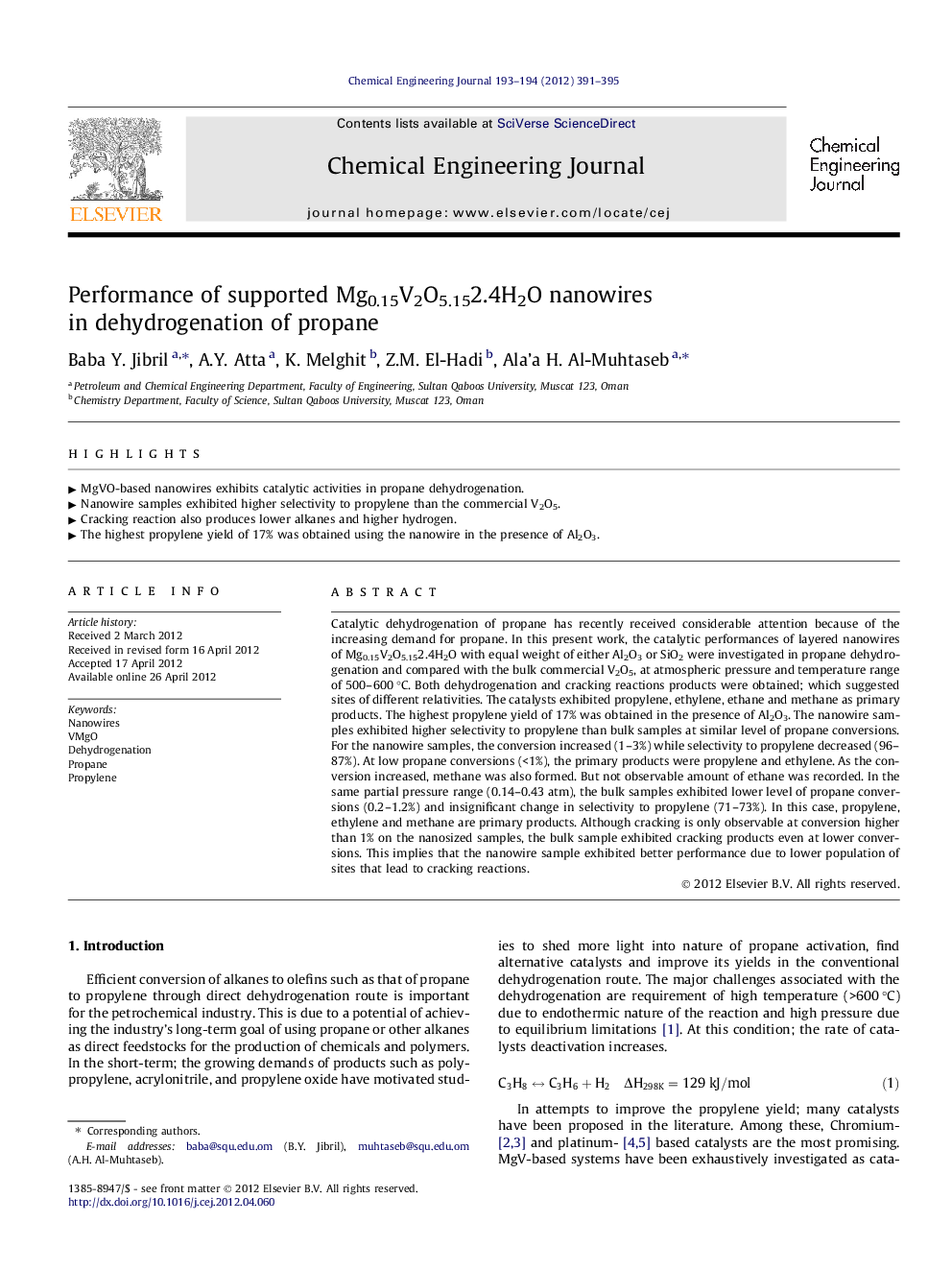| Article ID | Journal | Published Year | Pages | File Type |
|---|---|---|---|---|
| 149869 | Chemical Engineering Journal | 2012 | 5 Pages |
Catalytic dehydrogenation of propane has recently received considerable attention because of the increasing demand for propane. In this present work, the catalytic performances of layered nanowires of Mg0.15V2O5.152.4H2O with equal weight of either Al2O3 or SiO2 were investigated in propane dehydrogenation and compared with the bulk commercial V2O5, at atmospheric pressure and temperature range of 500–600 °C. Both dehydrogenation and cracking reactions products were obtained; which suggested sites of different relativities. The catalysts exhibited propylene, ethylene, ethane and methane as primary products. The highest propylene yield of 17% was obtained in the presence of Al2O3. The nanowire samples exhibited higher selectivity to propylene than bulk samples at similar level of propane conversions. For the nanowire samples, the conversion increased (1–3%) while selectivity to propylene decreased (96–87%). At low propane conversions (<1%), the primary products were propylene and ethylene. As the conversion increased, methane was also formed. But not observable amount of ethane was recorded. In the same partial pressure range (0.14–0.43 atm), the bulk samples exhibited lower level of propane conversions (0.2–1.2%) and insignificant change in selectivity to propylene (71–73%). In this case, propylene, ethylene and methane are primary products. Although cracking is only observable at conversion higher than 1% on the nanosized samples, the bulk sample exhibited cracking products even at lower conversions. This implies that the nanowire sample exhibited better performance due to lower population of sites that lead to cracking reactions.
► MgVO-based nanowires exhibits catalytic activities in propane dehydrogenation. ► Nanowire samples exhibited higher selectivity to propylene than the commercial V2O5. ► Cracking reaction also produces lower alkanes and higher hydrogen. ► The highest propylene yield of 17% was obtained using the nanowire in the presence of Al2O3.
